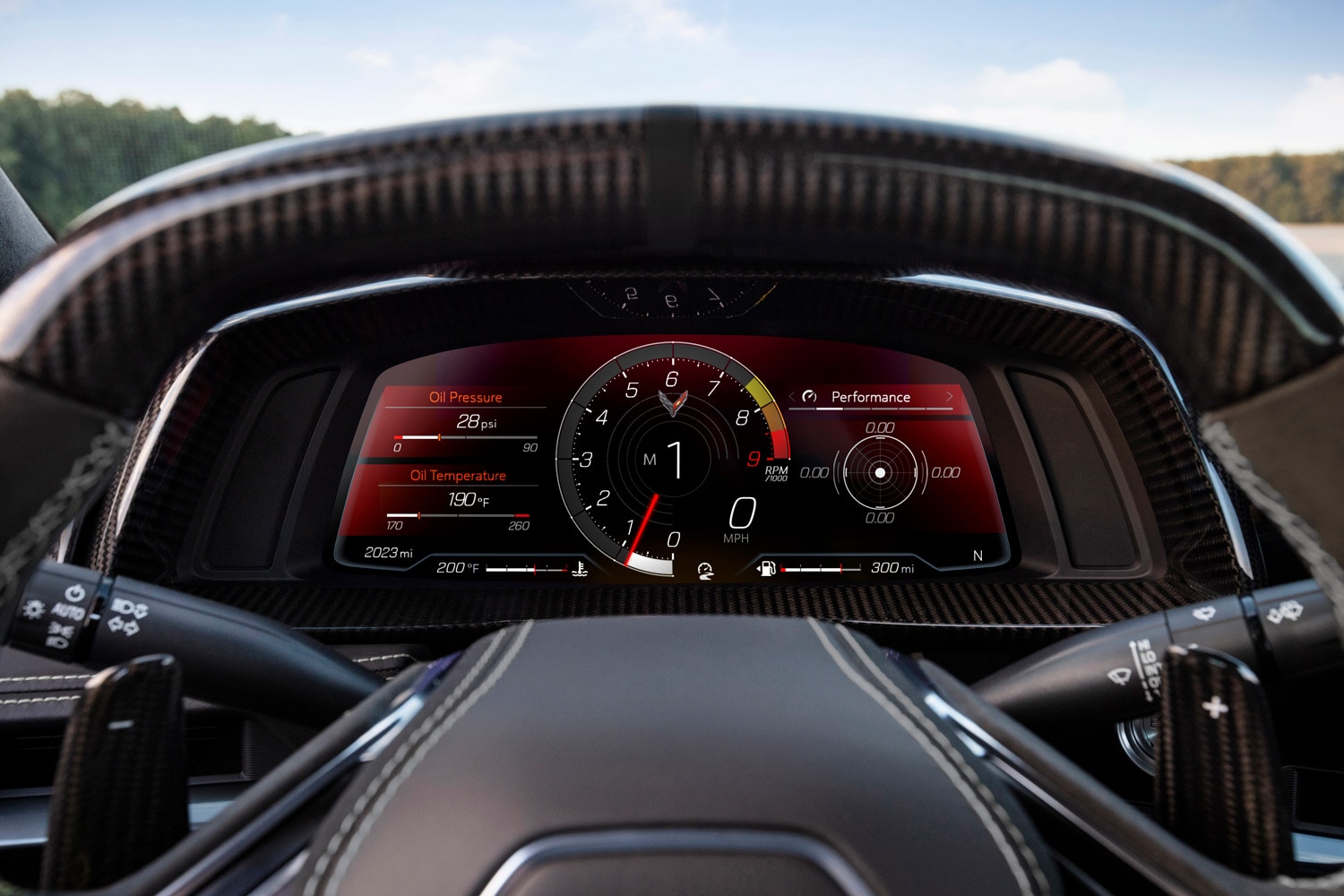Here Are 10 Common OBD Codes and What They Mean
These vehicle diagnostic codes can help solve your car’s issues quickly.
 Chevrolet
Chevrolet
There are many on-board diagnostic (OBD) system codes used to identify specific problems with modern engines and vehicle systems. These codes are generated by an automobile’s computer system when an issue arises, triggering the “check engine” light on the dashboard.
It’s possible to read these codes from a vehicle’s memory banks by using an OBD code scanner or dongle. Any vehicle sold in the United States after 1996 will have the updated OBD-II codes, so if you’re shopping for an OBD scanner it’s likely you want the OBD-II version.
Some OBD codes are more common than others across many makes and models of automobiles. We took a look at the most common OBD codes you’re likely to come across when using your own OBD scanner. It’s important to note first that driving a vehicle with the engine light on or flashing is not recommended.
Cylinder Misfire (P0300)
A misfire code such as P0300 means that combustion isn’t consistent in at least one of the vehicle’s cylinders. This will cause the engine to run or idle roughly and could also lead to a loss of power. A misfire code should be viewed as a symptom rather than a specific problem because it can be caused by a number of issues. These include bad sensors (camshaft, mass airflow, throttle position), vacuum leaks, worn or fouled components (spark plugs, wires, coil packs), or emissions equipment problems (exhaust gas recirculation or EGR system).
Sometimes the P0300 code appears with a number at the end instead of the zero. This indicates a misfire in a specific cylinder. For example, code P0303 means that the third cylinder is misfiring.
Catalytic Converter Inefficiency (P0420, P0430)
The P0420 and P0430 codes are triggered when there is an issue with one or both of an automobile’s catalytic converters. Each converter is paired with a set of oxygen sensors that measure the composition of exhaust gas. If the gas mixture leaving the converter falls outside a manufacturer’s specifications, this code can be triggered.
There are many potential causes for the P0420 and P0430 codes to appear, but catalytic converter failure is the most common. A bad oxygen sensor, an engine running too rich or too lean, or an exhaust system leak can also trigger these codes.
Evaporative Emission System Leak (P0440, P0455, P0442)
The P0400, P0455, P0442 codes report on a leak in a vehicle’s evaporative emission system. Given that gasoline exists as both a vapor and a liquid at room temperature, cars and trucks have a system in place that prevents gas fumes from escaping the fuel tank and lines. A drop in tank pressure can trigger this code, which can be tied to a fuel leak, a missing gas cap, a damaged charcoal canister, or a leak in the filler neck. You might also smell gas, and your car could fail an emissions test.
Evaporative Emission System Incorrect Purge Flow (P0411)
Another common emission system code is triggered when the charcoal canister containing gasoline vapor from the fuel system is allowing an improper amount of fuel into the combustion chamber. You may detect the odor of gas from the vehicle when this code appears.
The P0411 code often goes away when the malfunctioning purge valve is replaced or a connector line is unclogged. The sensor attached to the purge system might also fail.
System Too Lean (P0171, P0174)
When an engine is not receiving enough gasoline combined with the amount of oxygen required for combustion, that fuel mixture is described as lean. An engine that runs lean may produce less power or run roughly. The vehicle’s front oxygen sensors monitor for a lean condition and trigger this code.
A lean condition can be caused by a fuel system problem such as low pressure or a clogged or misfiring injector, but it can also occur when the mass airflow sensor is malfunctioning or there’s a vacuum leak in the system.
Fuel Trim System Rich (P0172, P0175)
These codes indicate the opposite of a lean condition. An engine running too rich has too much fuel in a cylinder. It also relies on the oxygen sensor to detect this problem. Symptoms associated with a rich condition are black smoke from the exhaust and poor fuel mileage. You might also notice hesitation while accelerating or a misfire because the spark plug is drenched in fuel.
Fixing a rich condition is similar to how a lean condition would be addressed, in that a mass airflow sensor problem can cause the issue. It is also often associated with a bad fuel pressure regulator or problems with the emission system.
Insufficient Exhaust Gas Recirculation Flow (P0401)
All gas-powered cars are outfitted with an exhaust gas recirculation system designed to clean up tailpipe emissions by recirculating some exhaust fumes into the motor to be burned. Typically, this is controlled by a valve, and when that valve fails it can trigger the P0401 code. A malfunctioning EGR can lead to a roughly running engine, power loss, and reduced fuel efficiency.
Oxygen Sensor Failure (P0141, P0161)
Oxygen sensors are at their most effective when they are heated to a specific temperature. In many cars, the first oxygen sensors are close enough to the engine to have the exhaust gases supply the required heat. The second sensor typically relies on its own heating element. When this heater fails, a P0141 or P0161 code is triggered, which usually indicates it’s time to replace the sensor. There are no performance issues associated with this code, but its presence is enough to fail an emissions test.
Mass Air Flow Circuit Low (P0102)
A vehicle outfitted with a mass airflow meter relies on that sensor’s measurement of the oxygen flowing through an engine’s intake for the computer to know how much fuel is required by each cylinder. When that meter can’t access a steady flow of air, a P0102 code is triggered. Most of the time, this means that the air filter has been blocked to the point where it’s starving the engine of oxygen. It can also indicate a dirty sensor element inside the mass airflow meter itself or a leak in the air intake.
You might not notice any direct symptoms of a P0102 code at idle, but at higher rpm an engine might lose power or run lean.
Coolant Thermostat Malfunction (P0128)
A vehicle’s engine computer relies on several temperature sensors to keep an eye on how hot it is. These can include the intake air temperature and the coolant temperature sensor. If temperatures inside the motor don’t reach their expected levels, a P0128 code can appear.
A P0128 code doesn’t relate to a temperature sensor problem, however. Instead, it indicates that the engine’s thermostat, which regulates coolant flow in and out of the motor, is likely leaking or stuck in the open position. This prevents a vehicle from warming up properly, which can also reduce heating system performance and reduce fuel efficiency.
Written by humans.
Edited by humans.
 Benjamin Hunting
Benjamin HuntingNearly two decades into his career as an automotive journalist, Benjamin has had his hands greasy, his hair blown back, and his heart broken by more than one project car. In addition to his work at Capital One, he has contributed features and reviews to Motor Trend, Car and Driver, Hagerty, Driving Line, Inside Hook, Super Street, European Car, Roadkill Magazine, Motor 1, The Drive, the Toronto Star, the National Post, Business Insider, NAPA, Autoblog, Automotive News Canada, and AutoGuide. He is also cohost of the Unnamed Automotive Podcast and cocreator of the Code 45 and Dead Air graphic novels. In his spare time, he's a friend to vinyl and enjoys keeping the shiny side up during track days.
Related articles
View more related articles